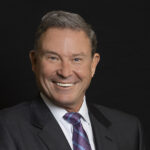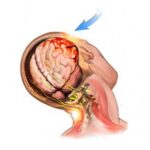The executive chairman of Ford Motor Company, Bill Ford, has made some extravagant predictions about the future of automobiles, according to a UPI report. He describes a system of automated vehicles that are linked across an electronic network. Sensors would alert individual vehicles to the proximity of other vehicles or obstacles, thus preventing collisions. Ford, the great-grandson of Henry Ford, predicts that automobiles, bicycles, and even pedestrians will share a connected wireless network by the middle of the century. For an attorney who helps people injured in automobile accidents, it raises questions of what would happen when collisions do occur.
Research into wireless technology that allows vehicles to communicate with nearby objects is advancing, gaining the support of the federal Department of Transportation (DOT). Known as V2X technology, it includes devices that allow vehicles to talk to each other (V2V) and those that connect vehicles to infrastructure (V2I) like medians, guardrails, and even buildings. DOT began a series of tests in 2011, called the Connected Vehicle Safety Pilot Program, in which drivers use V2X technology in ordinary road and highway environments. Making this technology widely available would require a tremendous investment in upgrading the existing infrastructure, since V2I technology would need to be nearly ubiquitous to be effective.
The biggest question to arise from this potential technology is how to deal with injuries or deaths when accidents occur. A 2010 study by DOT suggested that V2X technology could address up to eighty percent of the most common types of vehicle crashes. Even with highly-sophisticated sensors, though, accidents will happen. The technology simply cannot control for every conceivable road condition, weather problem, non-networked obstacle, or other unexpected event. The technology can address certain causes of car collisions, such as fatigue, distraction, and intoxication, but problems like software crashes and network overloads could simply replace those causes.
With no driver at the wheel, the principal responsible party in the standard negligence model is not there. Drivers have a duty to obey traffic laws and operate their vehicles in a reasonable and safe manner. When a driver breaches that duty and causes an accident, the law holds the driver responsible for the resulting damages. If an accident occurred due to a network error, or even simply an unexpected object in the road, the model of liability varies from unclear to entirely unprecedented.
A train crash in Washington, DC might offer an analogy. A train on the Washington Metro Red Line collided with another train in June 2009, injuring dozens of people and killing nine. The crash resulted from a faulty circuit in the automatic train control system that regulated the trains. The system failed to notice that a train car was parked on the track, so it sent a train full of passengers down the same track at full speed. Since then, all trains in the system have been controlled manually. The transit authority and several equipment suppliers admitted liability for not maintaining the system adequately. Any sort of automated system for individual automobiles would need someone or something monitoring the system that would take responsibility for errors.
Kansas City auto accident attorney Doug Horn advocates safe driving and represents the rights of people who have suffered injuries in auto accidents. For a free and confidential consultation, contact the firm today online or at (816) 795-7500.
Web Resources:
Frequency of Target Crashes for IntelliDrive Safety Systems (PDF file), National Highway Transportation Safety Administration, October 2010





